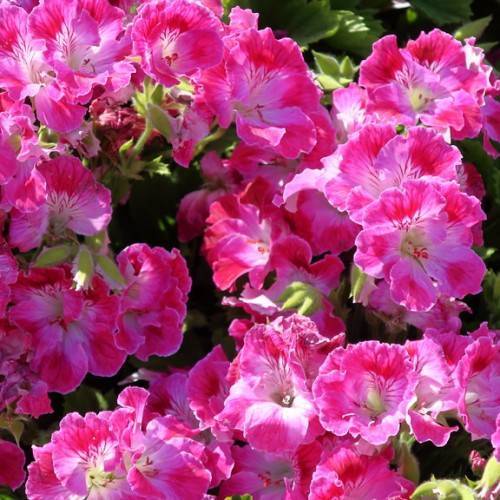
pelargonium
Pelargonium x domesticum
Also Known As - regal geraniumCycle:
Perennial
Watering:
Average
Hardiness Zone:
10
Flowers:
Flowers In Spring
Sun:
full sun
Fruits:
Fruits In Summer Ready In
Leaf:
Yes
Growth Rate:
Low
Maintenance:
Moderate
Salt Tolerant:
Yes
Indoors:
Yes
Care Level:
Medium
watering
Pelargoniums should be watered regularly, about once or twice a week, or when the top 2 inches of soil become dry. During the summer, it may require more frequent watering, as the plant can be prone to wilting. As the weather gets cooler in the fall and winter, you can decrease the watering frequency.
sunlight
Pelargonium x domesticum, or the common geranium, needs at least 5-6 hours of direct sunlight a day, ideally in the morning or late afternoon. It will benefit from full morning sun and partial afternoon shade in hotter climates. Direct sun can help the blossoms open to their fullest potential. Too much heat and direct sunlight can lead to the leaves of the plant getting wilted and the petals fading. Therefore, it is important to monitor the growing conditions and shade the plants when necessary.
pruning
Pelargoniums (Pelargonium x domesticum) should be pruned back regularly to promote healthy growth and encourage the plant to produce more blooms for the season. Pruning typically happens at the end of flowering season in summer when the top growth of the pelargoniums begins to get leggy or when buds are no longer forming on the stems. To prune, cut back each stem to the desired shape and size with a pair of clean and sharp pruning shears. Cut back about 1-third of the top growth, taking care to leave some top growth on the stems. Be sure to remove any dead or diseased branches, as well as any branches that are crisscrossing each other. If you want to shape the pelargoniums, make sure to cut the stems back evenly. When pruning, it is important to avoid pruning in the fall as this can significantly decrease the flowering potential for the following year's season.
